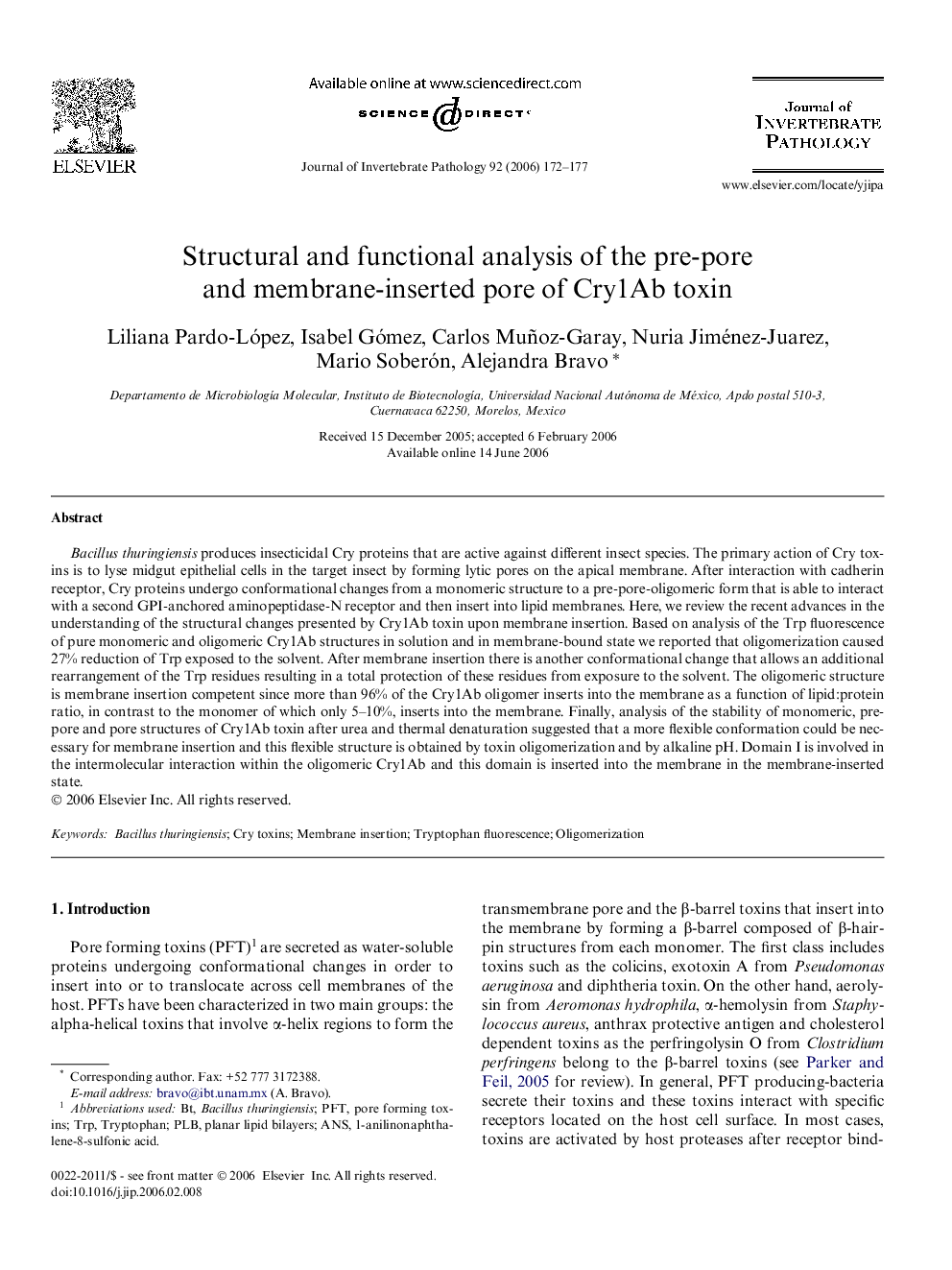| Article ID | Journal | Published Year | Pages | File Type |
|---|---|---|---|---|
| 4558812 | Journal of Invertebrate Pathology | 2006 | 6 Pages |
Bacillus thuringiensis produces insecticidal Cry proteins that are active against different insect species. The primary action of Cry toxins is to lyse midgut epithelial cells in the target insect by forming lytic pores on the apical membrane. After interaction with cadherin receptor, Cry proteins undergo conformational changes from a monomeric structure to a pre-pore-oligomeric form that is able to interact with a second GPI-anchored aminopeptidase-N receptor and then insert into lipid membranes. Here, we review the recent advances in the understanding of the structural changes presented by Cry1Ab toxin upon membrane insertion. Based on analysis of the Trp fluorescence of pure monomeric and oligomeric Cry1Ab structures in solution and in membrane-bound state we reported that oligomerization caused 27% reduction of Trp exposed to the solvent. After membrane insertion there is another conformational change that allows an additional rearrangement of the Trp residues resulting in a total protection of these residues from exposure to the solvent. The oligomeric structure is membrane insertion competent since more than 96% of the Cry1Ab oligomer inserts into the membrane as a function of lipid:protein ratio, in contrast to the monomer of which only 5–10%, inserts into the membrane. Finally, analysis of the stability of monomeric, pre-pore and pore structures of Cry1Ab toxin after urea and thermal denaturation suggested that a more flexible conformation could be necessary for membrane insertion and this flexible structure is obtained by toxin oligomerization and by alkaline pH. Domain I is involved in the intermolecular interaction within the oligomeric Cry1Ab and this domain is inserted into the membrane in the membrane-inserted state.
